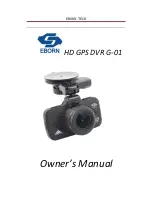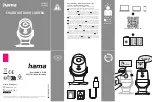
ZENIT-TTL User manual, 1965 year
– 1 –
Zenit TTL
This text is identical to the one in the User manual, English version, 1965 year.
1. Purpose and Advantages
ZENIT-TTL camera is intended for taking amateur pictures on black-and-white color films.
The camera is provided with a semi-automatic exposure meter operating through the lens (TTL) a
self-timer and is synchronized for flash lamp operation. It accepts interchangeable lenses provided,
with mounting thread of M42x1 and back focal distance of 45.5 mm.
ZENIT-TTL can be used for special kinds of photography such as reproduction works with the help
of extension tubes, taking close-up pictures of small subjects at close distance (macrophotography),
taking pictures with the help of a microscope (microphotography) and so on.
ZENIT-TTL camera has the following advantages:
•
semi-automatic TTL exposure meter provides for correct exposure setting when taking pictures
with the standard lens as well as with interchangeable lenses and extension tubes;
•
instant return mirror ensures continuous viewing of a subject before and after exposure;
•
high speed lens is provided with a pre-set diaphragm mechanism which automatically closes
the diaphragm at the moment of the shutter operation (“A” mode); manual operation of the diaphragm
is provided as well (“M” mode);
•
fully open diaphragm ensures maximum brightness of the image seen in the viewfinder; this
fact is very important at the moment of viewing and focusing;
•
focusing can be done both by a microraster or a ground glass;
•
speedy exposure setting, the system of simplified film loading, rewinding of exposed film with
the shutter disengaging bush in locked position — all these features cut down the time necessary for
preparing the camera for operation.
2. Specifications
Frame size — 24x36 mm
Film used — 35 mm, perforated
Length of film in cassette — 1,65 m
Number of frames — 36
Shutter speeds — from 1/30 to 1/500 s, “B” (by hand) and long exposure time
Standard lens — HELIOS-44M:
focal length — 58 mm
maximum relative aperture — f/2
diaphragm scale — from 2 to 16
distance scale — from 0,55 to “
∞
”
Exposure meter supply — from one battery of Mallory “PX-13” type
Film speed range — from 16 to 500 GOST units
Lens mounting thread — M42x1
Light filter thread — M52x0,75
Tripod socket thread — 1/4
ʺ
Viewfinder linear field of view — 20x28 mm
Overall dimentions without case — 138x100x93 mm
Mass — 1,01 kg

























